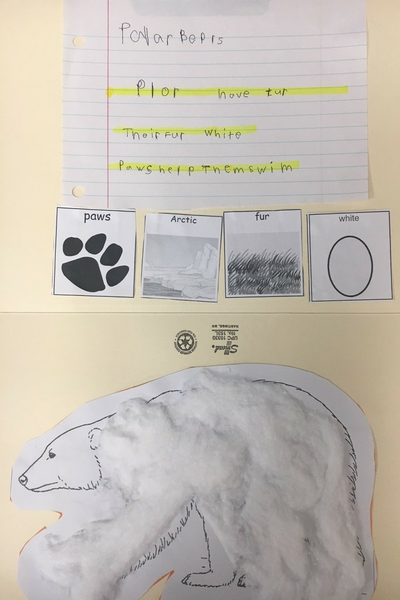Stephanie asked the student working on this project, “What keeps polar bears warm in the Arctic?” The student replied, “cotton balls.
“Stephanie pointed at the photo of the polar bear in our book, and said something like this, “Polar bears have thick white fur. Fur keeps the bear warm…..The cotton ‘looks like warm fur’. The bear has fur, not cotton…..how do bears stay warm?…..Yes…polar bears have warm fur.”
The Takeaway
This is a reminder that while hands-on projects are fun and are very helpful for students, we need to remember the issue people with an ID have with abstract representations of information. They are very, very literal. Even high-functioning students make mistakes like the one in the example above.
To address this, use high-intensity explicit instruction like Stephanie did. Simply put, keep talking about the topic (repetition) and ask a lot of questions. That is the only way you will know where a student’s level of understanding is on a topic. When we know what they know, we can clarify. Our job is to keep checking in to see what is understood and what is not. Typical peers can be taught to ask the student a lot of questions. Kids are great teachers, be sure to take advantage of this.
Thank you, Stephanie-Stephanie Talomie-Best writes our worksheets and lesson plans.




